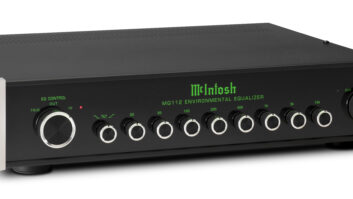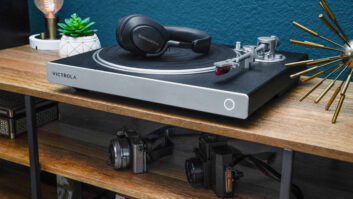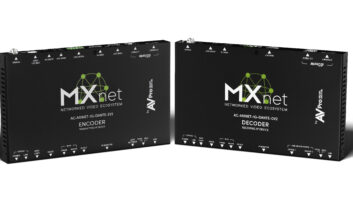We all know the preventative benefits of a periodic physical examination and check-up. It’s the one time you go to the doctor when you’re not actually sick, so he or she can poke, prod, weigh, listen, and make recommendations to keep you from getting sick (or worse) down the road. Likewise, it’s a good idea to occasionally look at the overall state of home theater audio to see how we’ve progressed and which areas need attention. As someone who is fortunate enough to see many of the best new projects every year, I have a pretty good perspective. So how are we doing?
The foundation of any good system is good gear. I’m happy to report that most folks have this part down. Sure, there are still a few projects where flashy, underachieving audiophile gear gets a disproportionate share of the budget, but integrators are gradually learning that big front-end sales don’t necessarily produce happy customers. There’s a ton of well-engineered, reasonably priced gear out there, and people are using it. Good stuff.
Integrators are now also pretty much aware that gear alone isn’t enough. The room itself has to be conducive to good sound. This means acoustic design of the shell and mechanical systems, plus interior acoustic treatment and layout. There are good, bad, and insufficient designs out there, but I’m pleased to see that most everyone is trying something. If you’re one of the ones who isn’t, see me after class. It’s time to get with the program.
There comes a point in every physical examination when the discussion turns to weight. If you’re like many Americans, you suck in your gut and attempt to explain to the doctor how your diet and exercise regimen are perfectly adequate despite the fact that you are 25 percent over target BMI. The doctor doesn’t buy it, because the scale doesn’t lie. When I look at most rooms objectively using my audio analyzer, they’re a little flabby around the edges, too.

How could this be? Shocking as it may sound coming from an acoustician, acoustic treatment alone isn’t sufficient to eliminate all the bumps and anomalies in frequency response. If you don’t trust analyzers, simply listen to pink noise cycle between the front channels–or play program material in mono from each in turn. Admit it. They don’t sound alike.
There is a solution: equalization.
Two Reasons EQ Gets a Bad Name
Equalizers should be specified into every installation, along with time to carefully balance the room’s response once everything else is finished. Unfortunately, I continue to see relatively few rooms with proper equalization. When I do, it’s usually the automatic type that does more harm than good. In talking with folks around the industry, there are two main reasons EQ use isn’t widespread. It’s time we address and get past them.
The first is signal degradation. There’s a longstanding myth that inserting an additional product in the signal path will cause audible side effects, particularly a digital one that adds and AD/DA cycle. This is simply not true. My associate Manny LaCarrubba recently conducted a blind AB test with some of the most sophisticated and demanding audiophiles in the country. None were able to tell whether or not there was a digital EQ in the analog signal path. That being said, the EQ–like any device–must be high quality, with good processing and low noise. It must also have the right number and type of filters to accurately correct response anomalies. Typically 15 bands of parametric per channel is sufficient.
The second reason is the actual tuning of the EQs to the room. Yes, it takes skill, experience, equipment, and a good bit of work to do well. Much like diet and exercise, it feels like the most desirable thing to skip over. But both will come back to bite you later if you ignore them. I really think room tuning is something that you need to learn to do yourself–if for no other reason than to get an understanding and appreciation of its necessity and benefit. However, it’s not for everyone. I get that. But you still can’t skip it. There are number of independent contractors who do really great work tuning rooms. Just build a relationship with one of them.
Ultimately, the ongoing success of your business is based not just on sales, but on the happiness of your clients. Word will travel among the small circles we serve. If your clients are unhappy, you won’t get more of them. There go your sales. So why not focus on something that gets you both things? EQ units increase your sales and your client contentment factor. Don’t let fear or ignorance stand in your way, here. You’re professionals. You’re better than this. Get on the stick. We need more EQs out there!
Chase Walton contributed to this column.
Anthony Grimani ([email protected]) is president of Performance Media Industries, with offices in San Francisco, Los Angeles, and Paris, France.







